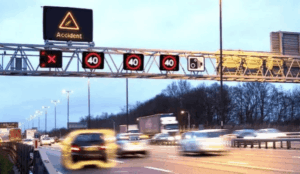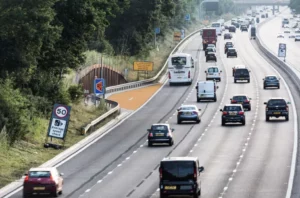More than 53,000 motorists have been caught by police enforcement cameras disobeying Red X signs on smart motorways since 2021, according to new research conducted by the UK’s leading road safety charity IAM RoadSmart.
Analysed data gathered through a Freedom of Information (FOI) request to police forces in England reveals that in 2021, nine police forces were enforcing against Red X infringements, with 4,393 drivers caught. A further eleven forces began prosecuting against the contravention in 2022 resulting in 20,773 motorists being captured by cameras. In 2023, a total of 21 forces used enforcement cameras to catch 28,231 drivers breaking the law. Almost all police forces with smart motorways within their boundary areas are now actively pursuing this type of criminality, says IAM RoadSmart.
The Red X is often used to close lanes on a smart motorway when an obstruction such as a broken-down vehicle is detected in the road ahead. Closed lanes are also used by the emergency services attending those who might need urgent assistance at the incident in question. Enforcement cameras automatically detect vehicles passing illegally under a Red X, which can result in a fixed penalty notice of up to £100 and three points or, in some cases, more severe penalties or a court appearance**.
Between 2021-23 inclusive, Surrey Police topped the table with 11,360 drivers caught committing Red X offences along stretches of the M3, M23 and M25 – the latter being Britain’s busiest motorway. Thames Valley Police had the second highest volume with 9,957 motorists being snapped by cameras over the same period. Further north, Greater Manchester Police had the third highest national number of intended prosecutions with 6,120 drivers committing Red X offences on motorways.
Bedfordshire Police did not begin enforcement until 2023, meaning only 28 drivers were caught ignoring the Red X sign by the police on this county stretch of the M1.
Recent smart motorway schemes were designed to ease congestion by turning the hard shoulder into a live lane. The first motorway to convert the hard shoulder into part-time running lane was the M42 in 2006. In 2013, the M25 was the first motorway to have stretches of hard shoulder removed altogether and replaced with a running lane. As of April 2024, there are 396 miles of smart motorways in England, which includes all-lane running (hard shoulder permanently removed); controlled (hard shoulder retained and variable speed limits); and dynamic (hard shoulder sometimes open to traffic) configurations. Drivers encountering problems on an all-lane running motorway should head for emergency refuge areas (ERAs), however not all make it.
IAM RoadSmart Director of Policy and Standards, Nicholas Lyes said: “Ignoring a Red X sign on a smart motorway is dangerous because it risks a serious collision and for this reason, we welcome police forces clamping down on those who break the law. If a lane is closed on smart motorway, it usually indicates there is either a stranded vehicle ahead, people are working in the road, or there has been a collision. Disobeying the sign puts the lives of those in the vehicle as well as those ahead in danger. If you see a Red X sign, you should slow down and move into an open lane when there is sufficient space to do so.”























